Yoga for Kids Helps Children Connect With Their Bodies and Develop Calm, Focused Minds
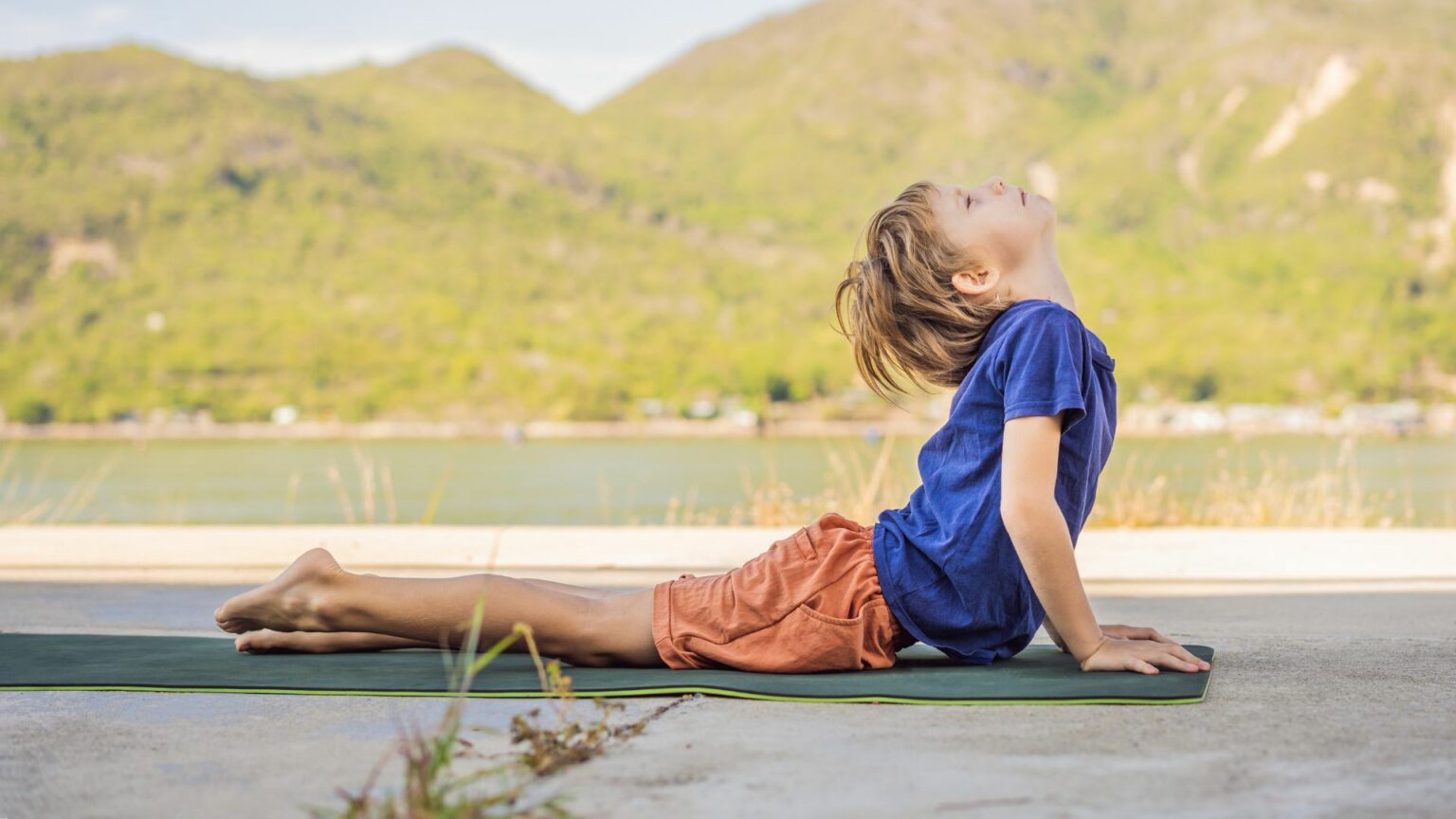
Last Updated: August 30, 2022
Yoga is not just about physical exercise; it is a lifestyle that promotes overall wellness. Practicing yoga early in life can provide lifelong health benefits and instill a positive outlook.
There are many benefits to starting yoga at an early age. For one, yoga helps to improve flexibility and strength, both of which decline as we age. Building strength and flexibility through yoga can help prevent injuries later in life.
In addition to the physical benefits, yoga also provides mental and emotional benefits. Yoga helps to reduce stress and anxiety, and promote relaxation. It can also help improve focus and concentration. By practicing yoga early in life, you can set yourself up for a lifetime of good health – both physically and mentally.
And finally, perhaps most importantly, starting yoga early provides a positive outlook on life. Yoga teaches us to be present in the moment and appreciate each day for what it is. This positive outlook can stay with you throughout your lifetime, providing you with the ability to better handle whatever challenges come your way.
A study published in the journal Frontiers in Neuroscience found that regular yoga practice can help offset age-related neurodegenerative changes and improve cognitive function in older adults. The research included two groups of people aged 55-59 years old; one group participated in weekly 90-minute yoga sessions for 24 weeks, while the other group did not. At the end of the study period, those who had practiced yoga showed significant improvements in memory and executive function (i.e., planning and problem-solving) compared to the non-yoga group.
In another study, this one published in BMC Complementary and Alternative Medicine, researchers looked at the effects of regular Kundalini yoga practice on psychological well-being in a group of 48 healthy adults aged 18-60 years old. After eight weeks of yoga classes, participants reported feeling happier, more content, and more satisfied with their lives than they had before starting the program. They also had lower levels of anxiety and depression.
The joy of living a healthy lifestyle is something that should be shared with everyone, starting with our youth. Yoga provides many lifelong health benefits and instills a positive outlook that can help children thrive in all aspects of their lives.
The breathing exercises taught in yoga help to calm the mind and promote relaxation. This can lead to improved concentration and focus both inside and outside the classroom setting. The mental discipline required for a successful yoga practice can also help students develop self-control, willpower, and resilience – qualities that will benefit them throughout their lives.
What Equipment Is Needed For Yoga?
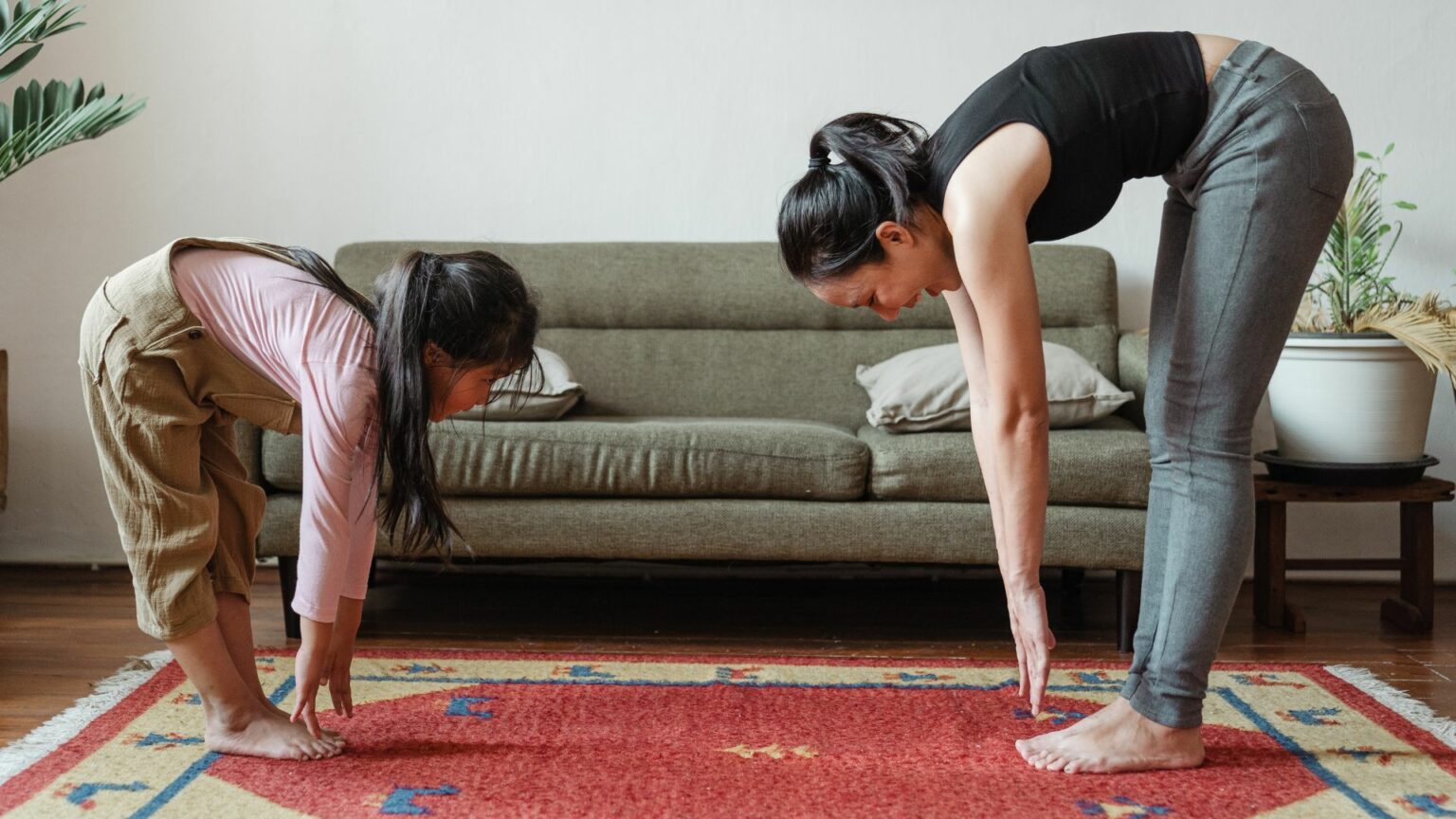
When you first begin practicing yoga, you may not feel the need for any extra equipment. After all, all you really need is a mat and some comfortable clothing, right? However, as you progress in your practice, you may start to feel the need for a few extra things to help improve your experience. Here are some of the most popular pieces of yoga equipment that can help enhance your practice:
1) Yoga Mat: A good quality yoga mat is important for two reasons. First, it provides a firm, stable surface on which to practice. This is especially important if you are doing standing or balancing poses. Second, a thick mat will cushion your body and help protect your joints from the hard floor. Look for a mat that is at least 1/4 inch thick and has a textured surface to prevent slipping.
2) Yoga Blanket: A yoga blanket is not essential, but it can be nice to have on hand for restorative or relaxation poses. It can also be used as props in other poses. Choose a lightweight blanket that can be easily rolled or folded up when not in use.
3) Yoga Bolster: A bolster is another optional piece of equipment, but it can be very useful, especially for beginners or those with back pain. It can help you maintain proper alignment in many of the poses, and it’s also just really comfortable to use! Again, there are many different types and sizes available, so make sure to do your research before purchasing one.
4) Yoga Blocks: Yoga blocks are another great tool for beginners, as they can help you achieve proper alignment in many of the poses. They come in different sizes and colors, so again, do your research to find the ones that are right for you.
5) Yoga Strap: A yoga strap is a simple piece of equipment that can be very helpful in certain poses. It can help you maintain proper form and alignment, and it’s also great for stretching. There are many different types and sizes available, so make sure to find the ones that work best for you.
What Are the Benefits of Yoga for Children?
Yoga has become increasingly popular in recent years, and for good reason! This holistic practice offers a plethora of benefits for both the body and mind. And, when it comes to children, yoga can be especially beneficial. Here are just a few reasons why your child may benefit from practicing yoga:
Physical Benefits — One of the most obvious benefits of yoga is that it is great exercise! It helps improve flexibility, strength, and coordination. In addition, practicing yoga can help improve your child’s posture and reduce fatigue. For children who are always on the go, yoga can offer a much-needed break to slow down and connect with their bodies.
Mental Benefits — In today’s fast-paced world, it’s more important than ever for kids to find ways to de-stress and relax. Yoga can help with this by teaching children how to focus and calm their minds. Through deep breathing exercises and relaxation techniques, children can learn how to better control their thoughts and emotions. These skills can be very helpful in managing stress both inside and outside of the classroom.
Social Benefits — Yoga can help children to feel more comfortable in social situations. This is because yoga helps to improve self-awareness and body confidence. With greater self-awareness, children can understand their own emotions better and regulate them more effectively. This can lead to improved social interactions with both peers and adults.
Improved Self — Boost self-esteem and create a positive body image. In our society, media images often present an unrealistic standard of beauty that can leave children feeling insecure about their own bodies. Yoga provides a refreshing counterbalance to these messages by teaching kids that they are perfect just as they are. As they practice yoga poses and become more aware of their breath and how their bodies feel, children develop a greater sense of self-love and appreciation.
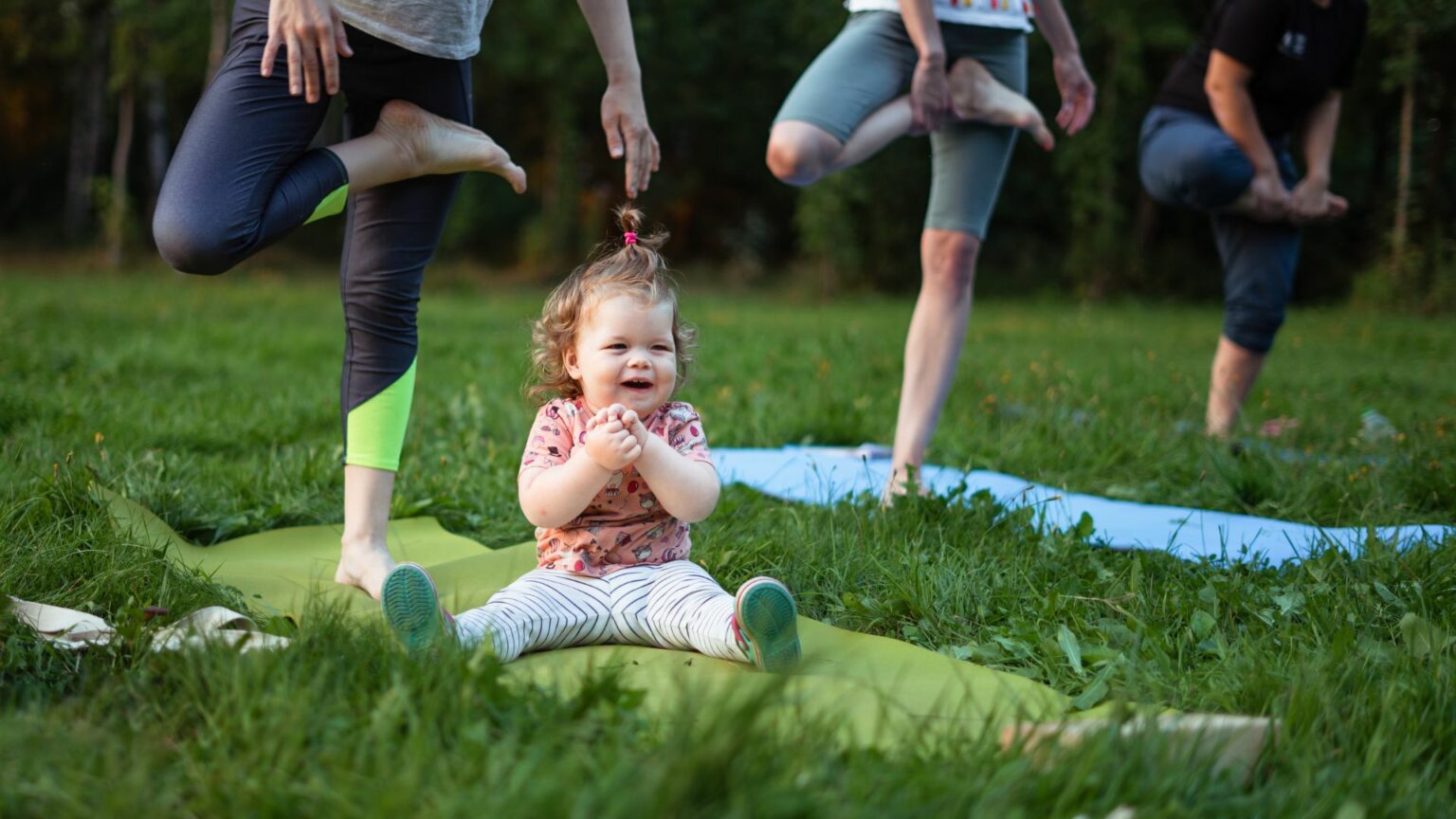
Physical Benefits
Besides developing strength, flexibility, and coordination, yoga has been shown to enhance many other aspects of physical health including:
1. Increased muscle strength and tone
2. Improved respiration, circulation, and energy levels
3. Lower blood pressure and heart rate
4. Maintained body temperature during hot yoga class! (Bikram or otherwise)
Yoga has also been found to be helpful in treating children with chronic medical conditions such as:
1. Asthma – A study published in the journal Thorax found that children who practiced yoga had better lung function and fewer asthma symptoms than those who didn’t practice yoga. The researchers believe that the breathing exercises involved in yoga help to strengthen the lungs and make them more efficient at taking in oxygen and expelling carbon dioxide.
2. Attention deficit hyperactivity disorder (ADHD) – A small study published in Frontiers in Psychology found that children with ADHD who took part in a 12-week program of Kundalini yoga showed significant improvements in symptoms compared to those who didn’t participate in the program. The researchers believe that the combination of physical activity, breathing exercises, and meditation may help to improve focus and concentration in children with ADHD.
3. Diabetes – A study published in Diabetes Care found that kids who participated in a eight-week Hatha yoga program saw their fasting blood glucose levels improve by 23 percent.
4. Cancer – According to one study, children with leukemia who participated in a 12-week yoga intervention had less anxiety and more positive attitudes about their disease and its treatment than kids who didn’t do yoga.
5. Back Pain – Yoga may be as effective as physical therapy for treating chronic back pain.
6. Chronic Fatigue Syndrome – People with chronic fatigue syndrome who took a 12-week yoga class twice a week reported less fatigue, better sleep, and improved quality of life compared to those who didn’t do yoga.
7. Depression – A review of 12 studies found that people with depression who took a yoga class felt better after 8 weeks than those who didn’t do yoga. Studies suggest that the combination of physical activity and deep breathing may help relieve symptoms of depression.
8. Anxiety – One study found that people with anxiety disorders who did Iyengar yoga had less anxiety and felt more relaxed after 6 weeks than those who didn’t do yoga. Another study showed that 3 months of Kundalini yoga was just as effective as medication in treating generalized anxiety disorder.
So what are you waiting for? Get your kids on the mat today and introduce them to the wonderful world of yoga!
Can My Child Do Yoga Alone?
As a parent, it can be difficult to find time to do things for yourself – let alone things like yoga. So when you see your child express interest in yoga, it may be tempting to let them practice on their own at home. But is this really a good idea?
For the most part, children should not practice yoga alone. Yoga is an incredibly beneficial activity, but it’s also important to approach it with caution. There are some poses that can be dangerous if not done properly, and children simply don’t have the same level of understanding as adults.
That being said, there are some ways that you can allow your child to safely explore yoga at home. If they’re interested in trying out some simple poses, you can look up beginner tutorials online together. Alternatively, there are plenty of kids’ yoga classes available both in-person and online that can provide guidance and support. And of course, you can always practice together as a family!
The bottom line is that while yoga is an excellent activity for children, it’s important to make sure they understand how to do it safely before letting them practice on their own. With your help and supervision, though, they can learn the basics and enjoy the benefits of yoga at any age.
The wonderful thing about yoga is that it’s not just a physical activity – it also brings peace of mind and a sense of calm. In our fast-paced, modern world, these are invaluable skills for children to learn. And what better way to teach them than by leading by example?
Of course, there are some safety considerations to bear in mind when practising yoga with children. They need to be able to understand and follow instructions, and be aware of their own limitations. But providing you take things slowly and keep an eye on them, there’s no reason why they can’t enjoy all the same benefits as adults from this fantastic discipline.
Here are a few tips on how to get started:
— Choose a time when your child is feeling calm and relaxed, perhaps after school or before bedtime.
— Start with some simple stretches and breathing exercises that they can do lying down or seated comfortably.
— Once they’ve mastered these basic techniques, you can gradually introduce more challenging poses – but always let them progress at their own pace.
— Be supportive and encouraging throughout, and resist the urge to push them into trying poses that they’re not comfortable with.
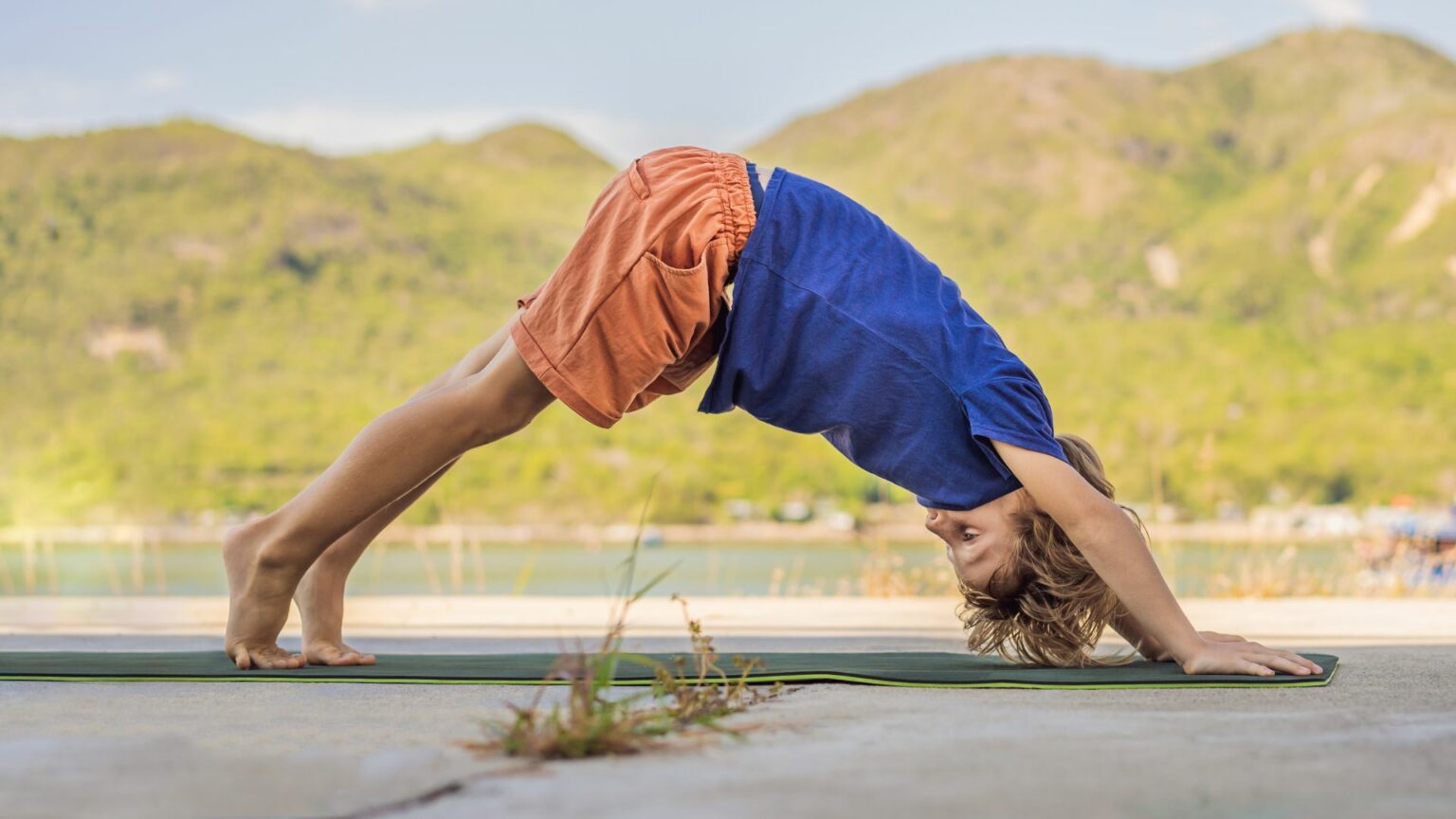
Of course, every child is different and will progress at their own pace – so ultimately it’s up to you as a parent to gauge whether your child is ready to practice yoga solo. Just bear in mind that even experienced yogis need occasional guidance and support, so don’t be afraid to check in from time to time or lend a helping hand when needed!
Assuming your child is of appropriate age and cognitive development to follow directions, there are plenty of ways to help them get started practicing yoga alone. If you have a younger child, around 3-5 years old, you can start by teaching them some of the basic poses using simple language and demonstrating how to do each one. For example, for Warrior I Pose (Virabhadrasana I), say something like “stand with your feet wide apart, then raise your arms up overhead and look up toward your hands” while doing the pose yourself. Once they seem to have the hang of it, encourage them to try it on their own while you do another pose nearby. As they get older and more experienced in their practice, they may want to start exploring different types of yoga or trying more challenging poses; at this point, it’s still important to offer support and guidance when needed but also trust that they know their own capabilities and limits.
If you’re not sure where to start or what resources would be best for your child’s solo practice, here are a few ideas:
-For kids who are just starting out, there are tons of great children’s yoga books and DVDs available. Look for ones that have both pictures and instructions, as kids often respond better to a visual aid.
-If your child is a little older, they might enjoy following along with an adult yoga class on TV or online. There are also many kid-friendly yoga videos available on sites like YouTube.
-There are even apps designed specifically for children’s yoga! These can be great for kids who want to practice independently but still need some guidance.
Of course, every child is different, so it’s important to find what works best for them. Just encourage them to breathe deep and relax into the poses – that’s the most important part!
How Often Should My Child Yoga?
How old is your child?
If your child is younger, they may want to try a kids yoga class once per week. As they get older and their interest in yoga continues, they may want to add an additional class or two each week. If your child is really enthusiastic about yoga, there may be no need to limit the number of classes they take! Just be sure to check with their teacher(s) first.
Additionally, if your child has already been participating in other sports or activities, you’ll want to make sure they have enough time to rest and recover between physical activity. For example, if your child plays soccer on Saturday mornings, it might not be ideal for them to do a vigorous yoga class directly afterwards. In this case, you can either choose a gentler class or wait until later in the day/evening for their next practice.
What are their goals?
If your child simply enjoys attending classes and doesn’t have any specific goals in mind (e.g., becoming more flexible), then one class per week is probably sufficient. If, however, your child wants to work on a specific goal, such as becoming more flexible or improving their balance, then attending class more frequently will be beneficial. Two to three classes per week is a good starting point for most kids.
How long are the classes?
This will vary depending on the studio/teacher, but most yoga classes for kids last between 30 and 60 minutes.
Is there a minimum age requirement?
Many studios have classes designed specifically for toddlers and young children, but some do have minimum age requirements of 3 or 4 years old. Please call ahead to inquire about age requirements at your local studio.
Assuming your child is of the appropriate age to attend a yoga class, how often they should go is really up to you as the parent. Some factors you may want to consider are whether or not your child enjoys attending class, if they have any interest in learning more about yoga and practicing at home, and lastly if you feel like their attendance is having a positive impact on their overall wellbeing.
If your child simply attends yoga classes because they enjoy being there and it makes them happy, then by all means continue taking them as often as you’d like! If however you feel like your child could benefit from learning more about what yoga is and actually practicing at home, then perhaps attending class once a week with the intention of doing some sort of home practice in between classes would be beneficial.
There are many online resources these days that can help guide parents in doing a kids yoga practice at home with their children. One such resource is Cosmic Kids Yoga which offers free weekly episodes featuring different story-based themes with accompanying yoga poses for kids to do along. You can find these episodes either on YouTube or through their website.
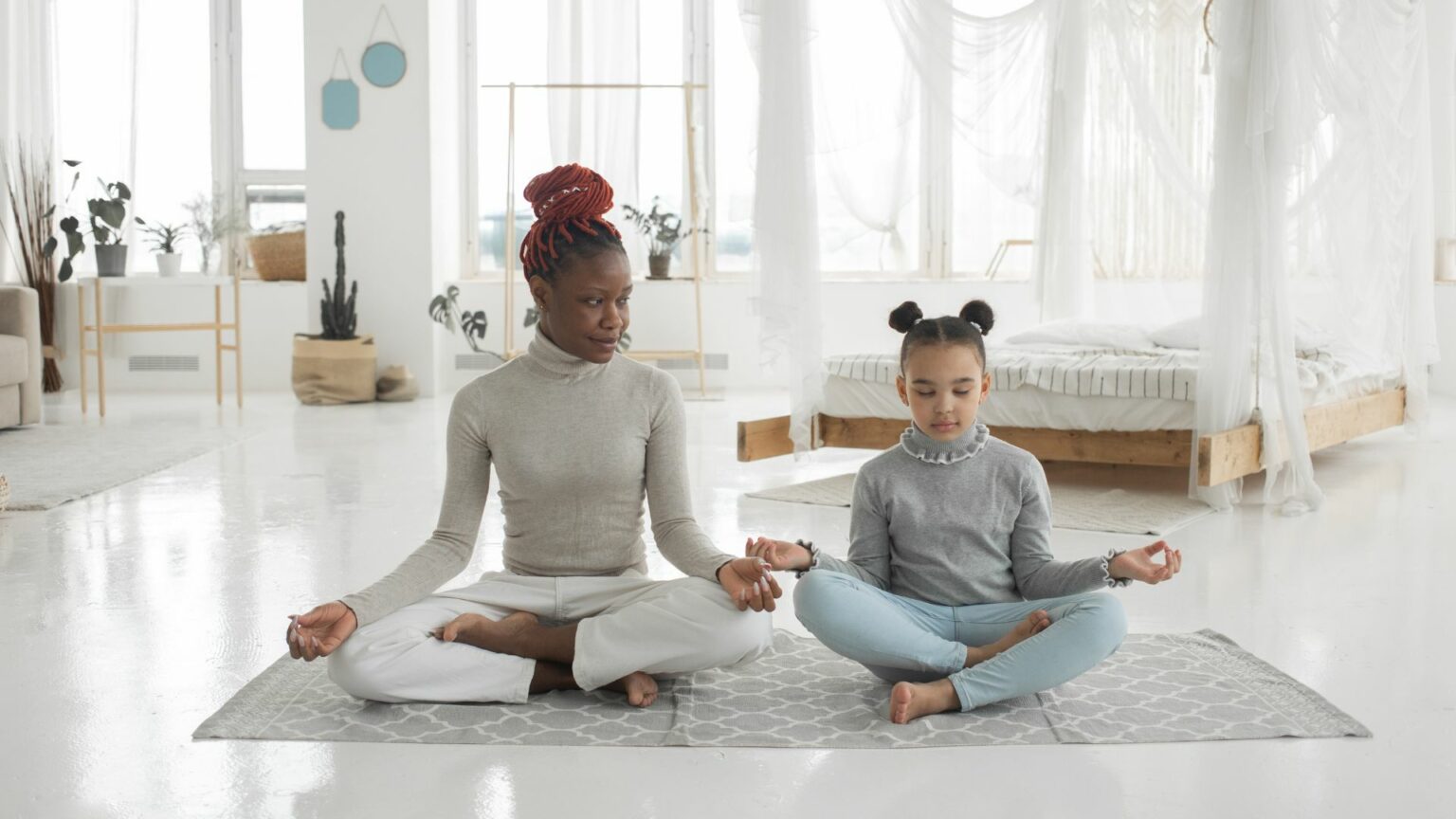
There are many different types of yoga classes available for kids, so it’s important to find a class that’s right for your child. Some things to consider when finding a class include:
The teacher’s experience and qualifications – make sure they have experience teaching children and understand how to adapt poses for different ages and abilities. The class size – smaller classes will allow your child to receive more individual attention from the teacher. The class atmosphere – look for a class that has an upbeat and positive vibe that your child will enjoy.
Some popular kid-friendly yoga pose themes include animals, pirates, princesses, superheros, outer space, under the sea, and dinosaurs. Below are examples of a few yoga poses inspired by these themes.
Animal Yoga Poses for Kids:
1. Cat-Cow: Start on all fours with a flat back. As you inhale, arch your spine and tilt your head up to the sky, making sure to keep your abs pulled in tight. This is cow pose. On the exhale, round your spine up towards the ceiling, tuck your chin to your chest, and release your tailbone towards the mat. This is cat pose. Continue moving slowly between these two poses as you breathe deeply in and out through the nose for 10 rounds of breath.
2. Downward Facing Dog: From all fours, tuck your toes under and lift your hips up and back until your body forms an inverted “V” shape with straight arms and legs. Relax into this position, letting gravity do its work to lengthen the spine and open up the shoulders while you breathe deeply for 5-10 breaths before coming back to all fours or standing up tall in mountain pose.
3. Warrior I: Start in mountain pose then take a giant step forward with one leg while keeping both legs straight (you may need to widen your stance). Turn the back foot out at a 45-degree angle and press down evenly through both feet. Bring your hands to your hips and then reach your arms up overhead, biceps by your ears. You should feel the stretch in the front of the thigh and ankle of your back leg. Gaze forward over your fingertips.
4. Warrior II: Start in Warrior I then lower both arms to parallel to the ground with palms facing down, shoulders over hips, and lunge forward into a low squat (hips will be about as low as knees). Keeping both legs straight, square off your pelvis so that it is pointing directly forward then turn your head to gaze over one shoulder (keep eyes focused on an object in front of you to avoid neck strain). Hold for 3-6 breaths before coming back into Warrior I on an exhale. Repeat on other side.
5. Side Angle Pose: From Warrior II, place one hand on the ground right under your shoulder and extend the other arm directly overhead (perpendicular to the floor), fingers pointing toward the sky. Gaze up at your fingertips while pressing firmly through both feet keeping the back of the body long.
What Can Parents Expect From a Typical Yoga Class?
Assuming you are referring to a kids yoga class, here is what you can expect:
Your child will be engaged in an activity that is not only fun, but also good for their mind and body. Research shows that yoga can help improve focus, increase self-esteem, reduce anxiety and stress, and improve overall physical fitness.
A typical kids yoga class will involve breathing exercises, coordinating movement with breath, gentle stretches and postures (asanas), relaxation, and sometimes meditation. The pace of the class will be slower than a traditional adult yoga class, and the instructor will use kid-friendly language and demonstrating poses using props such as stuffed animals or cartoon characters.
If your child has any medical conditions or injuries that might be affected by yoga, please be sure to let the instructor know before class begins so they can offer modifications as needed. Also, if your child tends to be more energetic or have a hard time sitting still for long periods of time, let the instructor know so they can provide extra attention and support.
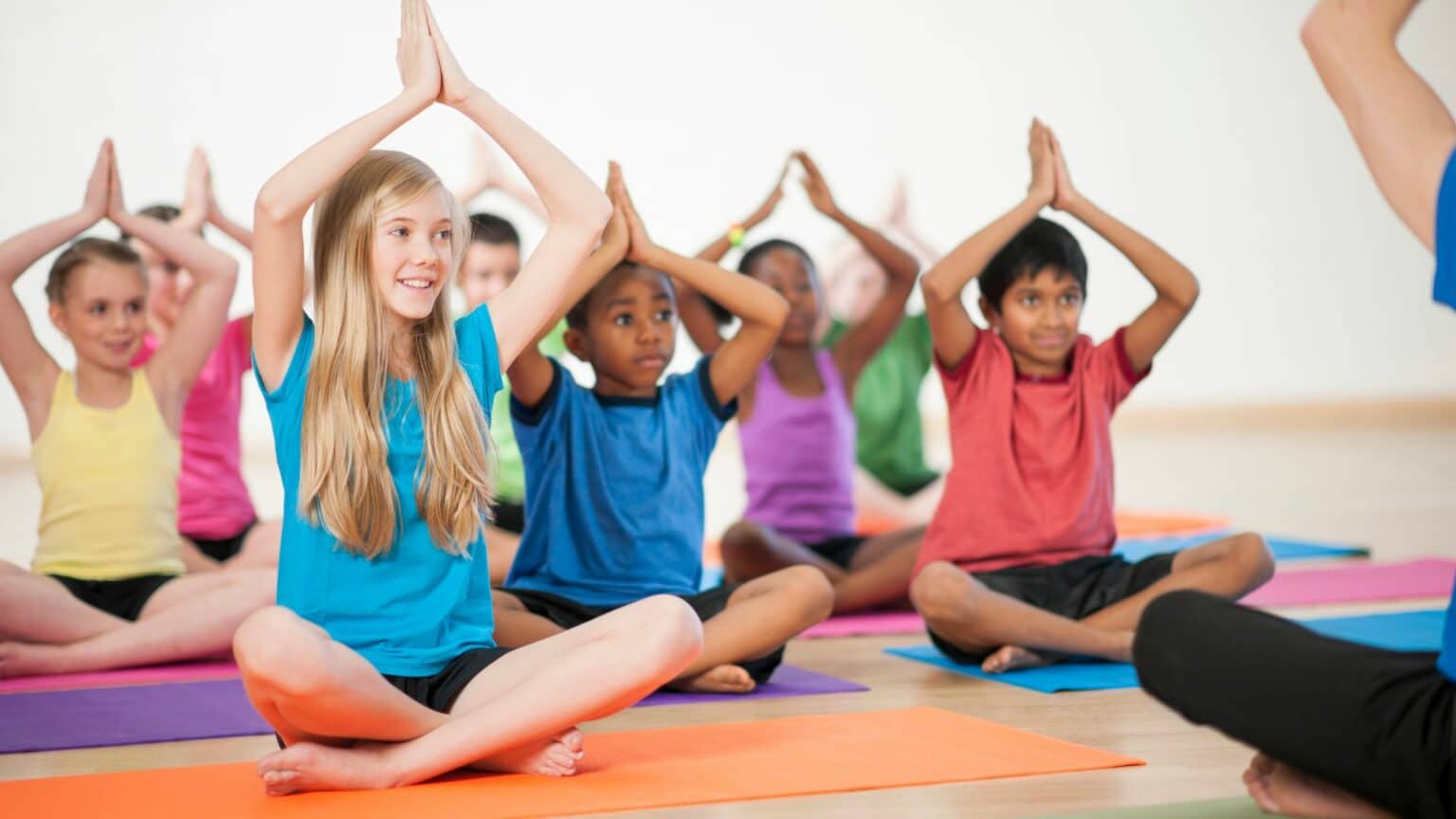
Above all else, a good kids yoga class should be enjoyable for both you and your child! You can expect your child to have a lot of fun while they learn some valuable yoga tools that they can use both on and off the mat. In addition to having fun, you can also expect your child to:
— Improve their flexibility and range of motion
— Increase their strength and muscle tone
— Enhance their coordination and balance
— Build concentration skills as they learn to focus on following directions
— Reduce stress and tension through breath work and relaxation techniques
— Boost their energy levels
Additionally, many of the balancing poses found in yoga require kids to use both sides of their brains at once — something that can help improve coordination overall. Finally, parents can also expect that their kids will be less stressed after completing a yoga class. The deep breathing exercises promote relaxation while the physical activity helps to release any built-up tension in the body.
Is It Necessary To Practice Yoga For a Long Time?
Yoga is an ancient practice with many benefits for both the body and mind. While there are some who believe that it takes years of practice to reap these benefits, others find that even a short yoga practice can be helpful. So, what’s the truth? Is it necessary to practice yoga for a long time in order to experience its benefits?
Let’s take a look at some of the key benefits of yoga and see if they require a long-term commitment.
Improved flexibility is one of the most common reasons people start practicing yoga. And it’s true that the more you practice, the more flexible you will become. However, even beginner yogis can notice increased flexibility after just a few sessions. If your goal is simply to improve your flexibility, then you don’t need to commit to years of yoga. Just show up on your mat regularly and give it your all – over time, you will see results.
Another popular benefit of yoga is improved strength. Like flexibility, this usually comes with time and regular practice. However, if your main goal is strength-building, there are other forms of exercise that may be more efficient – things like weightlifting or HIIT workouts.
That said, yoga has a lot of other benefits that make it worth doing even if you’re not looking to get jacked. For one, it can help improve your flexibility and range of motion, both of which are essential for strength training (or any kind of training, really). It can also help alleviate pain in the lower back and other joints, and increase blood flow to those areas.
So while you don’t need to practice yoga for years on end to see results, it definitely has its own unique set of benefits that make it worth incorporating into your fitness routine – even if only for a few months at a time.
Yoga has been around for centuries, and it’s no wonder why. The practice provides countless benefits for both the body and mind. From improving flexibility and strength to reducing stress and promoting relaxation, there’s pretty much nothing that yoga can’t do.
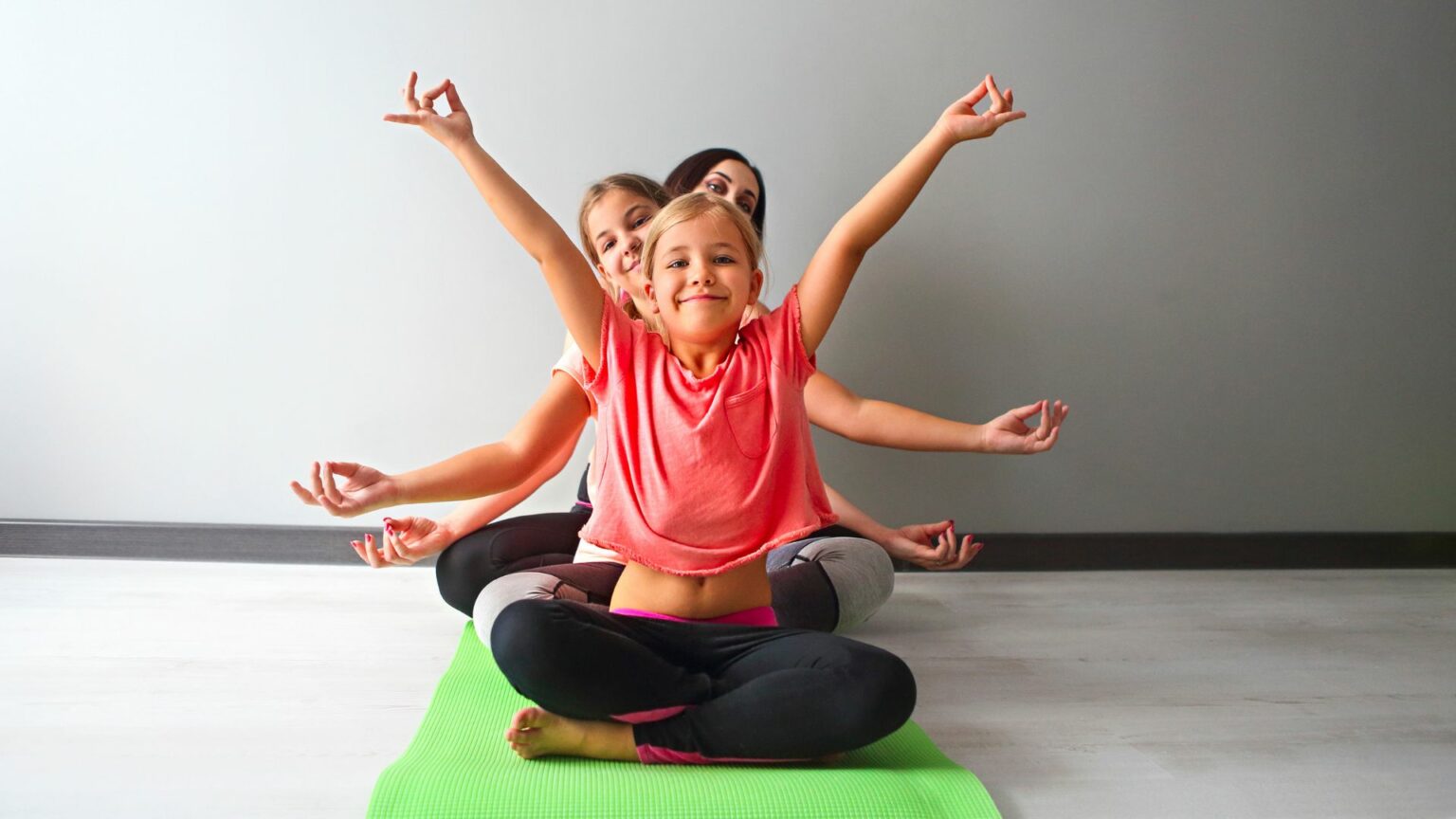
If you’re new to yoga, you may be wondering how long you need to practice in order to see results. And while there’s no hard and fast rule, generally speaking, the longer you stick with it, the more benefits you’ll experience.
Of course, even if you only have time for a few yoga classes per week or month, you will still reap some rewards. For example, if your goal is simply to improve your flexibility, a few months of regular practice should do the trick. On the other hand, if you want to see significant changes in your overall fitness level or physical appearance, practicing yoga for years on end is probably necessary.
No matter how long you choose to practice yoga for, one thing is certain: It will benefit your body and mind in ways that other forms of exercise simply cannot match. So what are you waiting for? Get on your mat today and start reaping the rewards of a regular yoga practice!
There are plenty of benefits to practicing yoga that can be experienced relatively quickly, but they tend to be surface level changes. In order to experience the more profound and long-lasting effects of yoga, it is necessary to commit to a regular practice over a prolonged period of time. This doesn’t mean that you need to spend hours on your mat every day – even just 20 minutes a day can make a big difference if you are consistent with it.
The reason why a longer-term commitment is necessary is because real change happens slowly and progressively. Each time you step on your mat, you are creating new neural pathways in the brain which shape how you think, feel and behave off the mat as well. The more frequently you practice, the stronger these pathways become and the more ingrained these positive changes become. It takes time for this process to unfold but eventually, with consistency, your yoga practice will start to change your life in truly meaningful ways.
You Also May Like
Copyright 2025 © Top Sports For Kids
Topsportsforkids.com is a participant in the Amazon Services LLC Associates Program, an affiliate advertising program designed to provide a means for sites to earn advertising fees by advertising and linking to Amazon.com.


